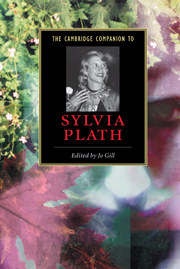Book contents
7 - The Colossus and Crossing the Water
from Part II - Works
Published online by Cambridge University Press: 28 August 2006
Summary
Sylvia Plath's first collection, The Colossus and Other Poems, was published in England in October 1960 and in the US in 1962. Crossing the Water, the third of Plath's collections, was published posthumously, after Ariel, in 1971. It contains some poems written around the same time as those in The Colossus ('Private Ground' (CW) and 'The Manor Garden' (C) were both written in 1959) and others which predate, or in some cases coincide with, the poems of Ariel; 'In Plaster' (CW), for example, was written on the same day as Ariel's 'Tulips'.
The poems in these two collections, then, span some five or six years. They include a range of voices, themes and styles and have their roots in diverse locations; the American coast and desert, the Yorkshire moors, Cambridge, Devon and numerous indeterminate and imaginary places. Influenced by Yeats, Eliot, Auden and Marianne Moore, among others, they look back to classical mythology, to Shakespeare and to folk stories. Ted Hughes describes these poems as mathematical in design and as a form of science or alchemy (WP, pp. 174, 180-82, J Abr., p. xiii). One might equally think of them as visual and painterly, as influenced by art and sculpture (Brueghel, de Chirico, Baskin, Gaugin, Klee ( J, p. 359)). And one might also note their struggle to represent the unconscious and unknown.
- Type
- Chapter
- Information
- The Cambridge Companion to Sylvia Plath , pp. 90 - 106Publisher: Cambridge University PressPrint publication year: 2006
- 3
- Cited by



